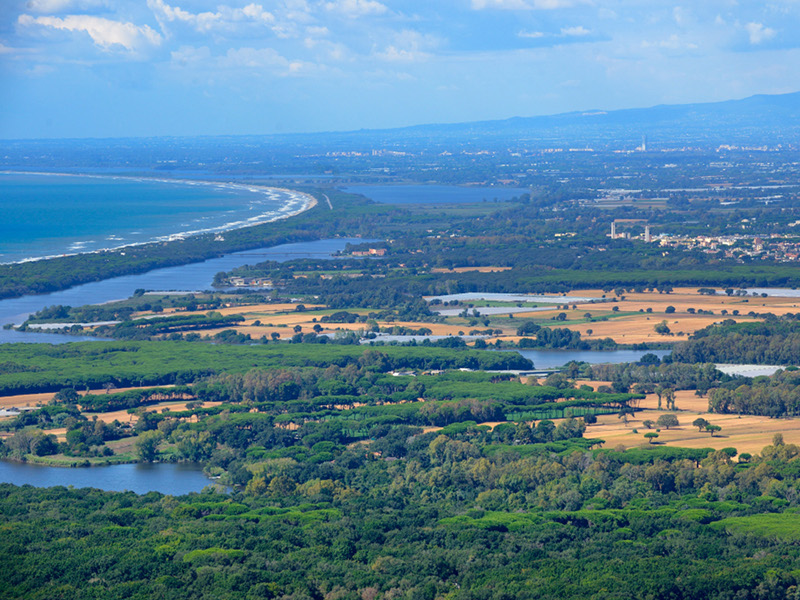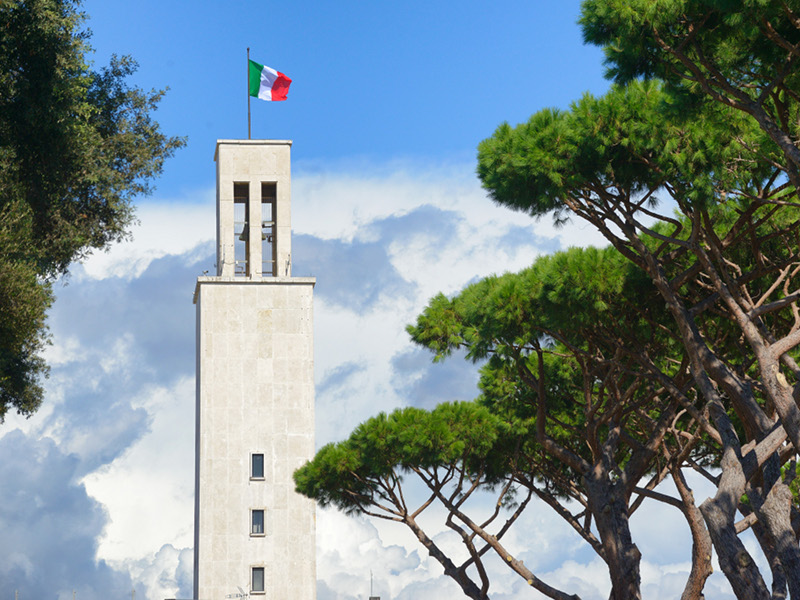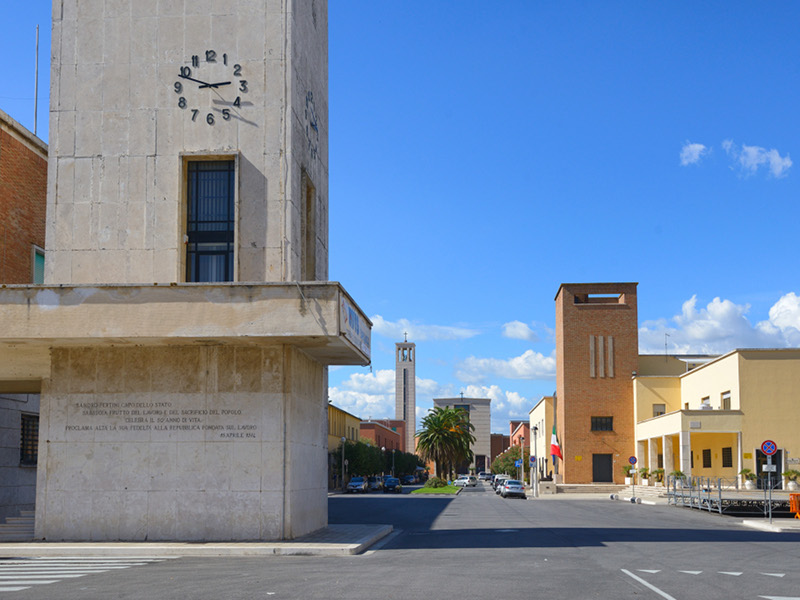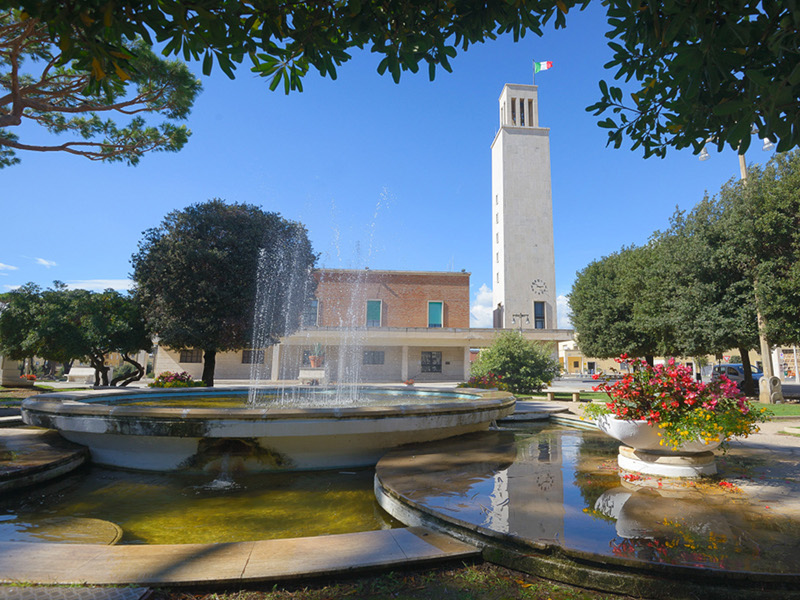Sabaudia
Sabaudia was founded in 1934 together with the Park. It is located on the shores of Lake Paola, in the heart of Circeo National Park.
The town's interesting architectural features make it one of the best examples of Italian rationalism. Its linear and sober buildings, wide roads, open and sunny squares are a destination and object of study for architects and town planners from all over the world.
The town was built around Piazza del Comune, where the Town Hall is located: its 42-meter-high tower serves as a landmark for the inhabitants all around.
Monuments and places of interest
Shrine of Santa Maria della Sorresca
Not far from Sabaudia, on the shore of Lake Paola's Annunziata branch, the small and ancient shrine of Santa Maria della Sorresca was built on the ruins of a Roman villa of the 1st century AD. The name Sorresca probably comes from the Late Medieval word for canal, "Surrectum".
The Benedictine monks built the shrine in the 4th century AD. The unusual-looking bell tower could also be used for lookout and defence in case of necessity. The rest of the building housed the monastery, which was active until the 18th century, when it was suppressed in the Napoleonic era. A 13th-century wooden Virgin and Child is kept in the shrine.
Church of Santissima Annunziata
The church was built during the foundation of Sabaudia and was inaugurated in 1935.
It is 22 metres high, 55 metres long and 29 metres wide; the façade features a portico and is covered in blocks and slabs of travertine rock in two different shades; the sides are covered in red bricks. The fine mosaic on the façade represents the Annunciation, with images referring to the environment and daily life during the reclamation period.
Beside the church, on the right, there is the oval-plan baptistry and, on the left, the 45-metre high bell tower. The "Royal Chapel" inside the church of Santissima Annunziata was a gift of Queen Margherita of Savoy, who donated it to the city in the 1930s. The chapel was originally placed inside Palazzo Margherita in Rome.
Museums
Museum of the Sea and the Coast
At the Museum of the Sea and the Coast, audiovisuals, scale models, and images show the paleontological, paleo-ethnological, and historical features of the Sabaudia area. Fossils from the ancient Tyrrhenian Sea, tools of the Neolithic people, and Roman findings are also on display.
Opening hours: Monday to Saturday, 3-7 pm; in July and August, Saturday 4.30-8.30 pm.
Guided visits for schools are organised upon request. The Museum organises further cultural activities such as conferences, workshops, exhibitions, etc.

Sabaudia
(photo by Marco Buonocore)

Sabaudia
(photo by Marco Buonocore)

Sabaudia
(photo by Marco Buonocore)

Sabaudia
(photo by Marco Buonocore)